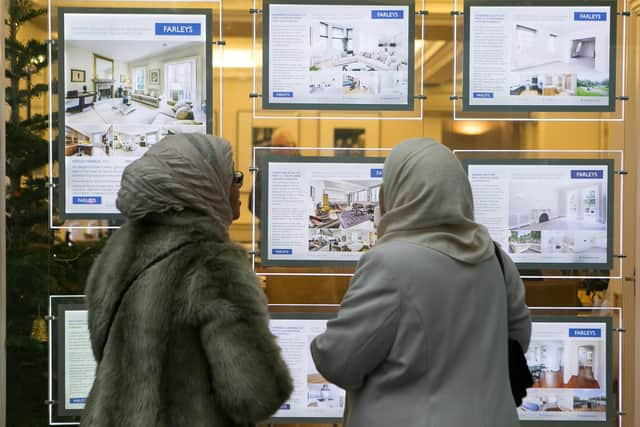Why the housing market is showing signs of a slowdown - Sarah Coles
At the start of the week, Zoopla offered a triple whammy. It highlighted that house price growth was slowing in April, and that although prices were still up 8.4% over the previous 12 months, that figure was down from 9% a month earlier. If growth continues to slow at this rate, it will fall to 3% by the end of the year.
It added that at the same time, more sellers were having to cut their asking prices to make a sale. Around one in 20 properties cut the price by 5% or more in April (up from one in 22 in March). Sellers who’d assumed the market was still racing away at full pelt were having to face the difficult truth that their agent was being over-optimistic.
Advertisement
Hide AdAdvertisement
Hide AdAnd to make matters worse, it was taking longer to sell too. When you exclude London, it takes an average of 18 days from listing to agreeing a sale – up two days in a month. It’s hardly an agonising wait, but it may well be a sign of things to come.


The following day, the Bank of England chimed in with more bad news: mortgage approvals for loans to finance house purchases in the next few months have dropped below the pre-pandemic 12-month average.
Mortgage approvals are a useful measure of the health of the property market, and right now they show that the number of people planning a purchase is falling.
Then on Wednesday we had the Nationwide House Price Index for May – the first of the indices covering the month. It showed annual growth at 11.2%, which is still eye-wateringly high.
Advertisement
Hide AdAdvertisement
Hide AdHowever, house price growth had slowed for the second consecutive month, and it predicted price rises would continue to fall back for the rest of this year. When you add in the fact that last week HMRC told us that property sales in April were down 10.5% from March, and were 13.9% lower than a year earlier, it means we’ve had six separate signs that the market is slowing.
The picture around the country always varies fairly dramatically. Frustratingly, for details of prices in Yorkshire, we’ll have to wait weeks for the Land Registry statistics.
The figures we have so far indicate that price rises may have peaked at 9.5% in February in Yorkshire and Humberside, before dropping back to 9% in March.
However, we will have to wait for April’s figures to see whether it bucked the trend or fell further.
Advertisement
Hide AdAdvertisement
Hide AdMeanwhile, the view from the agents differs significantly across the region. In the April report from the Royal Institution of Chartered Surveyors, agents in Huddersfield and Richmond said the market was still hectic, and demand as high as ever, while those in York, Doncaster and Northallerton said it had dropped back from the peak.
The fact that the market is starting to shift isn’t a shock for everyone: the question was always ‘when’, rather than ‘if’ this was going to happen.
Rising prices and increasing mortgage rates have pushed mortgage payments up significantly.
At a time when the cost of everything is rising through the roof, this has forced some buyers to reconsider what they can realistically afford.
Advertisement
Hide AdAdvertisement
Hide AdAt the same time, mortgage lenders have factored higher prices into their affordability calculations, making it more difficult to borrow.
The question is now whether we’ll see a gradual slowing down, or price drops. At the moment, the balance is in favour of a slowdown. The key factor is demand, which has outweighed the supply of properties on the market for so long.
The Zoopla figures showed that demand is well above the five-year average, while supply is well below it, so sensibly priced, popular houses are still attracting bidding wars. This is likely to put a floor under prices.
Those of a gloomier disposition may look ahead with more concern. As time goes on, the impact of inflation is likely to get worse as we head towards the end of the year.
Advertisement
Hide AdAdvertisement
Hide AdIf it has a wider impact on the economy, we could see job losses, forced sales, and buyer confidence ebbing away.
If that comes at the same time as rising rates, it could exacerbate the problem. It sounds fairly catastrophic for homeowners, but the good news is that there’s no widespread consensus that this is on the cards. Most people are predicting a gradual slowdown and a sluggish market in the months to come.
Even if the worst-case scenario pans out, those of us who’ve lived through property price crashes before know that as long as our own circumstances don’t change too much, it isn’t the end of the world. If you’re living in a property that’s well within budget, and it’ll suit your needs for years to come, then you can ride it out.
It’s only if you’re planning to stretch your finances to the limit for a home you’ll outgrow relatively quickly, on the assumption that prices will continue rising rapidly forever, that it’s worth considering whether now is the time to be taking this kind of risk.
Sarah Coles is a personal finance analyst at Hargreaves Lansdown
